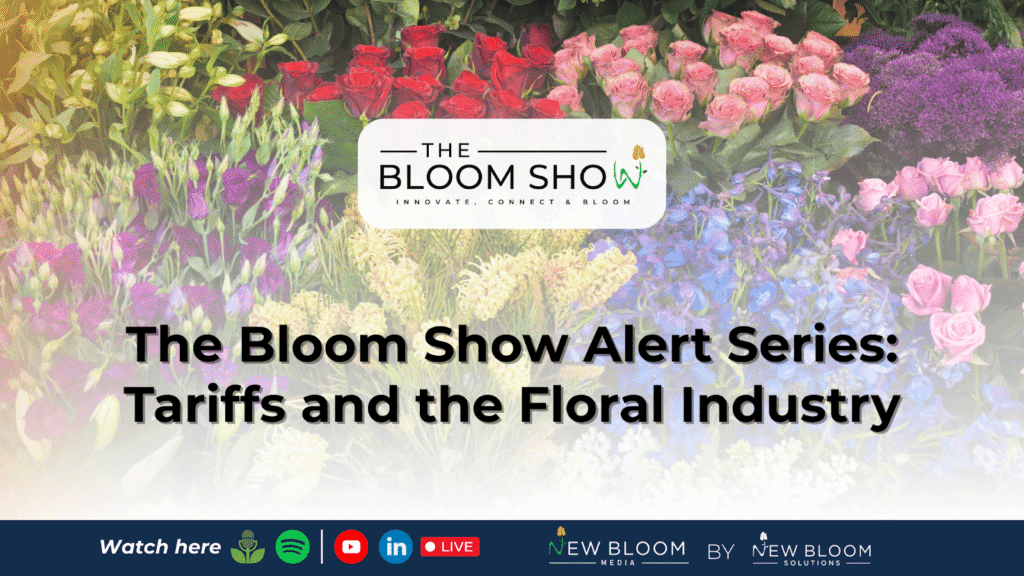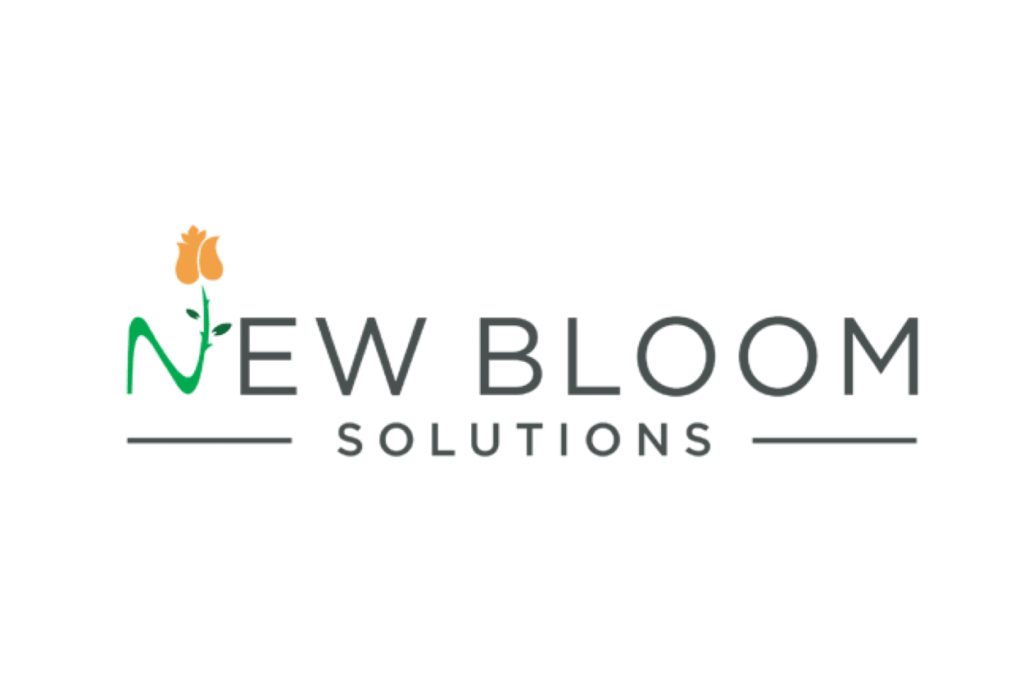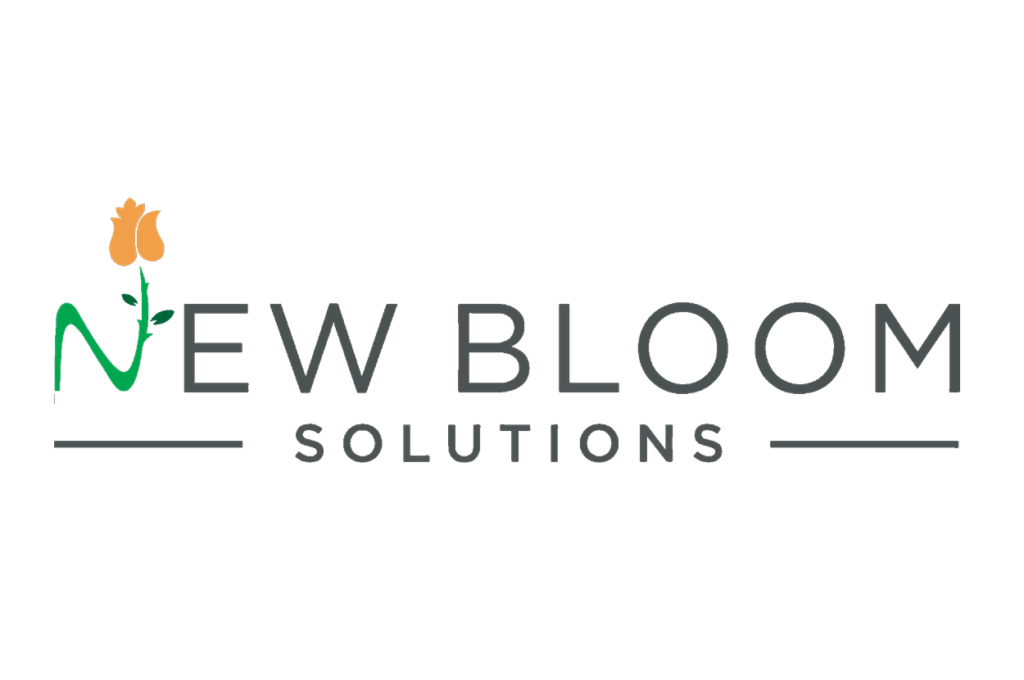As flower tariffs loom on the horizon, the U.S. floral industry is facing a pivotal moment. With
required duties on flower imports from key supplier nations like Colombia, Ecuador, and the
Netherlands, the ripple effects are already being felt across the floral supply chain — from
growers and importers to wholesalers and mass-market bouquet manufacturers.
To bring clarity, perspective, and unity during this time, New Bloom Media by New Bloom Solutions launched the Blooming News Alert — a rapid-response video series on The Bloom Show, hosted by Sahid Nahim. The series convenes over 10 global industry leaders to share firsthand insights on how flower tariffs are and may affect the B2B floral industry.
This blog gives you an easy-to-read recap of the most important highlights from The Bloom Show’s tariffs series.
Why Flower Tariffs Matter: A Turning Point for the B2B Floral Economy
The floral industry thrives on global collaboration. Over 80% of fresh flowers sold in the U.S. are imported, with Colombia and Ecuador supplying the lion’s share. Tariffs as high as 25% on imported flowers and floral inputs threaten not only wholesale flower pricing but also long-standing partnerships, logistics systems, and seasonal sales strategies.
At stake are:
- Profit margins for all stakeholders across the board
- Retail pricing and bouquet composition
- The stability of the floral supply chain
- Sourcing alternatives and international trade dynamics
Voices from the Front Lines: Insights from Global Floral Leaders
Supermarket Update with Joe Don Zetzsche (former Vice President of BLOOMS Floral Marketing at H-E-B)
As a retail strategist, Joe Don emphasized how flower tariffs are hitting the supermarket sector the hardest. Expect retailers to:
- Understand the overall impact of these changes
- Explore how to mitigate these impacts step by step
- Cooperate and communicate the challenges to your partners as soon as possible
“Breathe, take time, but dig into the details. It’s really critical to understand by item, by category, and by customer. ”
— Joe Don Zetzsche
Ecuadorian Growers with Eduardo Letort (President of Expoflores and Hoja Verde)
With Ecuador facing a 16.8% tariff, Eduardo Letort is leading proactive advocacy to maintain the U.S.–Ecuador floral trade.
- Projected increase: ~$0.50 to $1 per dozen roses.
- Calls for deeper collaboration, not conflict.
- Highlights the flowers’ essential role during the pandemic.
“Let’s think of this as a short-term problem that may bring us long-term solutions.”
— Eduardo Letort
Colombian Growers with Augusto Solano (Executive President of Asocolflores)
As Colombia supplies 65%+ of U.S. flowers, the 10% tariff could reshape the entire floriculture economy. But Augusto emphasized:
- No interest in retaliatory measures.
- Focus on diplomacy and mental wellness via flowers.
- Staying positive and optimistic.
“We believe in free trade for flowers everywhere.”
— Augusto Solano
Importers and Logistics Experts: Rodrigo Leiva (President of Esmeralda Farms) & Christine Boldt (Executive Vice President of AFIA)
From port to point-of-sale, importers now bear the brunt of immediate duties.
- The immediate imposition of tariffs creates significant cash flow challenges for importers.
- Cash flow and freight planning are under pressure.
- Ongoing advocacy from AFIA is in motion.
“We’re very resilient. We lived through the pandemic. We lived through COVID and thrived during that period. This is another obstacle that we’ll have to overcome collectively. ”
— Rodrigo Leiva
U.S. Florists with Kate Penn (Executive Vice President & CEO of the Society of American Florists)
Florists may not import directly, but the floral industry inflation trickles down quickly.
- Florists are worried about tariffs exacerbating existing price increases due to inflation.
- SAF is calling for tariff exemptions for some floral supplies.
- Florists are urged to educate clients early and often.
“Let’s make sure our legislators hear directly from us.”
— Kate Penn
Government Affairs & Advocacy: Rebeckah Adcock (Vice President of U.S. Government Relations at IFPA) & John Hollay (Director of Workforce and Labor at IFPA)
IFPA breaks down the U.S. response to the flower tariffs.
- While IFPA pushes for floral exemptions, the administration holds firm, using tariffs as trade leverage.
- Labor shortages remain the top challenge in U.S. agri-production.
- IFPA continues to share data and advocate for reforms to protect the industry’s future.
“We are asking and have made the case for [tariff] exemptions.”
European Markets with Marco Groot (President of Hilverda De Boer)
Despite the growing concerns on tariffs, Marco Groot advocates shedding light on what it really means.
- The tariff is calculated on the bare cost price of the flowers, not the total invoice value (including freight, conversion, and logistics), lessening the overall financial impact.
- Encourages proactive adaptation, not panic.
- Believes tariff is not nearly as detrimental as being portrayed.
“We’re like water, we’ll float and we’ll survive 100%. We are a resilient business.”
— Marco Groot
Economic Perspective with Professor Charlie Hall (Professor and Ellison Chair in International Floriculture at Texas A&M University)
The only economist in the series, Professor Hall provided critical macro insight:
- Tariffs are applied to the cost of goods imported, but the final price impact depends on how much suppliers absorb versus pass on to customers.
- Flexibility is key to navigating tariff challenges.
- Businesses should stay agile, plan ahead, and negotiate smartly with partners.
“Nail your value proposition down and have it tight in situations like this.”
— Professor Charlie Hall
Cross-Cutting Themes: What Everyone Agrees On
Cash Flow will be Tight
Importers are fronting millions in tariffs with no immediate ROI. Financing terms and planning windows must adjust.
Advocacy Is Critical
Leading associations like SAF, AIA, IFPA, Asocolflores, and Expoflores are actively lobbying for floral-specific solutions.
Transparency Wins
Now more than ever, early communication across the supply chain — with retailers, florists, and customers — is essential.
Onshoring Has Its Challenges
Domestic production plays a key role, but scaling quickly is complex. Labor, infrastructure, and climate factors make diversification — both local and global — essential.
What B2B Floral Professionals Should Do Now
Here’s how businesses can stay ahead in the face of floral import tariffs:
- Educate Your Customers – Prepare talking points now for your clients.
- Support Your Associations – Stay engaged with SAF, AIA, AFIA, Expoflores, and Asocolflores.
- Review Payment Terms & Logistics – Build in buffer time and budget.
- Share This Series – Help unify the industry with reliable, informed content.
Our Message to the Industry: Let’s Bloom Together
At New Bloom Media, we believe in the power of transparency, collaboration, and storytelling. The Blooming News Alert series wasn’t created out of fear — it was born from our commitment to elevate, inform, and unite the B2B floral industry.
Tariffs may challenge our systems, but they don’t define our resilience. Together, we can continue to share knowledge, support one another, and advocate with a unified voice.
Because just like flowers, this industry thrives when nurtured — together.
If you’d like to collaborate, be featured, or share your perspective in a future Blooming News Alert, contact us.



